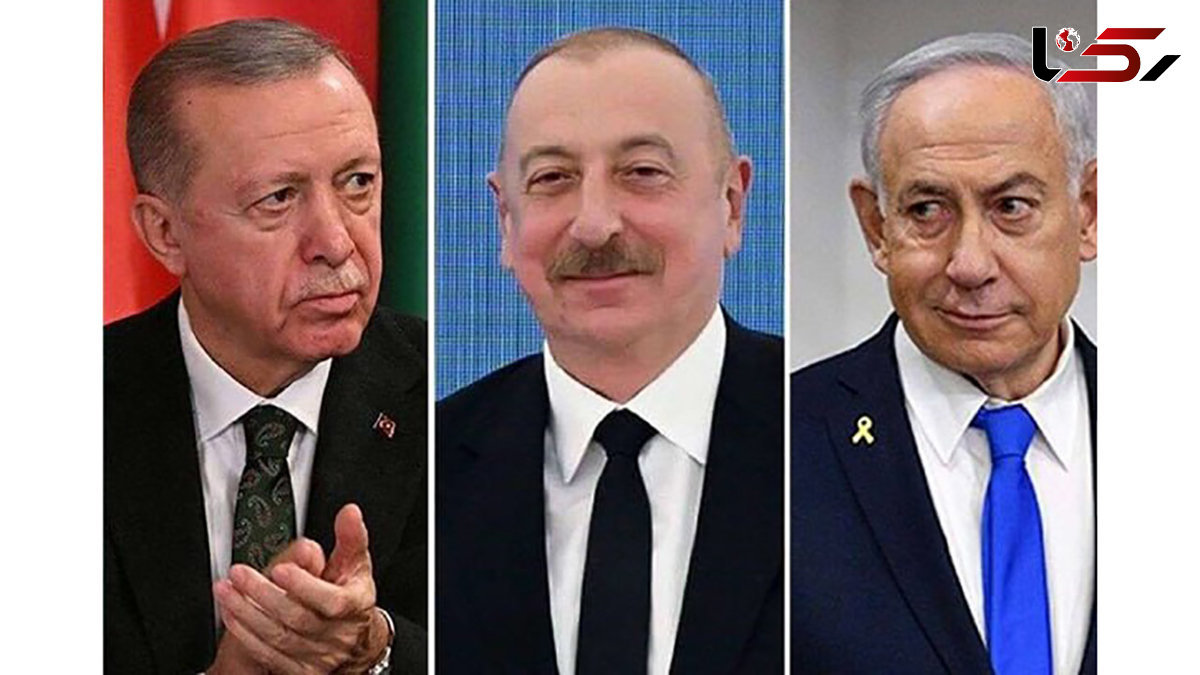Zangezur and David Corridors: Iran’s Silent Transit Siege
Rokna Political Desk: The “Zangezur” and “David” corridors are infrastructural projects with a geopolitical nature, silently encircling Iran’s transit position and redefining the region’s power map. In this war, the primary tools are not military weapons, but logistical infrastructures and communication routes.

Currently, infrastructural and transit developments in the West Asia and South Caucasus region have entered a decisive stage.
Regional affairs expert Ebrahim Majid believes the emergence of two strategic projects known as the “Zangezur Corridor” and the “David Corridor” could fundamentally alter Iran’s economic dynamics on both regional and even global scales.
While these two corridors appear to be logistical and developmental projects on the surface, in reality, they function as geostrategic tools aimed at redefining energy and goods trade routes in the region, thereby challenging Iran’s position as one of the traditional East-West transit hubs.
Zangezur: Gradual Elimination of Iran from Eurasian Trade Routes
The Zangezur Corridor, which passes through Armenia’s Syunik Province, connects the Republic of Azerbaijan to the Nakhchivan Autonomous Republic and subsequently to Turkey. Though it is presented as a developmental and transit initiative, it inherently carries strategic messages that directly target Iran’s transit economy.
Iran’s traditional role as a secure and cost-effective transit route for energy and goods between Central Asia, China, the Caucasus, and Europe has long been a key pillar of its regional status. With the completion of the Zangezur Corridor, this role is set to significantly diminish, as Azerbaijan will gain direct access to Turkey and beyond to Europe without relying on Iranian territory.
From an economic standpoint, the most significant consequence of this project is the reduction in Iran’s transit revenues and its weakened role in initiatives like China’s Belt and Road Initiative. Simultaneously, the corridor empowers Turkey and Azerbaijan to emerge as independent players in the Eurasian energy market, bypassing Iran in pipeline and rail networks and thereby diminishing Iran’s bargaining power in regional markets.
Parallel Architecture to Bypass Iran from the West
To the west of Iran, a parallel project informally referred to as the “David Corridor” is taking shape. This route originates from the occupied Palestinian territories and extends through Jordan and southern Syria into Iraq, particularly the Kurdistan Region of Iraq. Although the project appears to have more security and military dimensions, its infrastructure is designed in such a way that it could in the future evolve into an alternative economic corridor for accessing markets in Iraq, Syria, and even the Persian Gulf.
Economically, this route presents advantages for Israel and its allies: it enables the export of goods, equipment, and even technical services to a region that has thus far been largely inaccessible due to geopolitical constraints.
Moreover, the presence of Israel and its affiliated companies in the Kurdistan Region of Iraq—particularly in the energy sector—will be bolstered through this corridor, without Iran or Iraq’s central government having any role in resource management. The structural weakness of Syria’s economy and the fragility of Iraq’s governing institutions have made the implementation of this route feasible.
Intersection of Economy and Geopolitics: Coordinated Architecture to Contain Iran
Although these two corridors are geographically separate, their operational design reveals a coordinated blueprint for redesigning regional trade routes. Zangezur in the north sidelines Iran’s transit infrastructure on the Eurasian route, while David in the west closes Iran’s window of influence toward the Levant and Iraq through a military-economic mechanism.
Infrastructure War Against Iran
This dual-layered architecture essentially signals the emergence of a hidden infrastructure war against Iran—where transport routes, pipelines, railways, and special economic zones are being weaponized to isolate a nation.
Iran now faces a threat not on a conventional battlefield, but on the chessboard of global trade.
Iran’s Actions: Seeking to Regain Position Through Alternative Means
In response to this trend, the Islamic Republic of Iran has not remained passive. Efforts to develop the International North-South Transport Corridor (INSTC), strengthen southeastern ports like Chabahar, establish rail connections with Central Asia, and expand economic cooperation with Russia and China are part of Tehran’s strategy to preserve its geoeconomic standing.
However, the challenge lies in the fact that Iran’s projects often suffer from delays, lack of foreign investment, and weak inter-institutional coordination. Meanwhile, rival corridors are being implemented or finalized at a much faster pace with comprehensive support from regional and global actors.
A Silent Battle within Infrastructure
What is unfolding today through two transit corridors in Iran’s north and west goes far beyond a mere infrastructure competition. These two corridors symbolize a new form of geopolitical economy in which rail lines, gas routes, and roadways have replaced tanks and warships as instruments of pressure.
For Iran, failure to redefine its regional role within this emerging order could lead to economic weakening—not through sanctions, but through gradual exclusion from regional and global supply networks.
This threat may be silent and incremental, but its eventual consequences could be just as devastating.
Send Comments